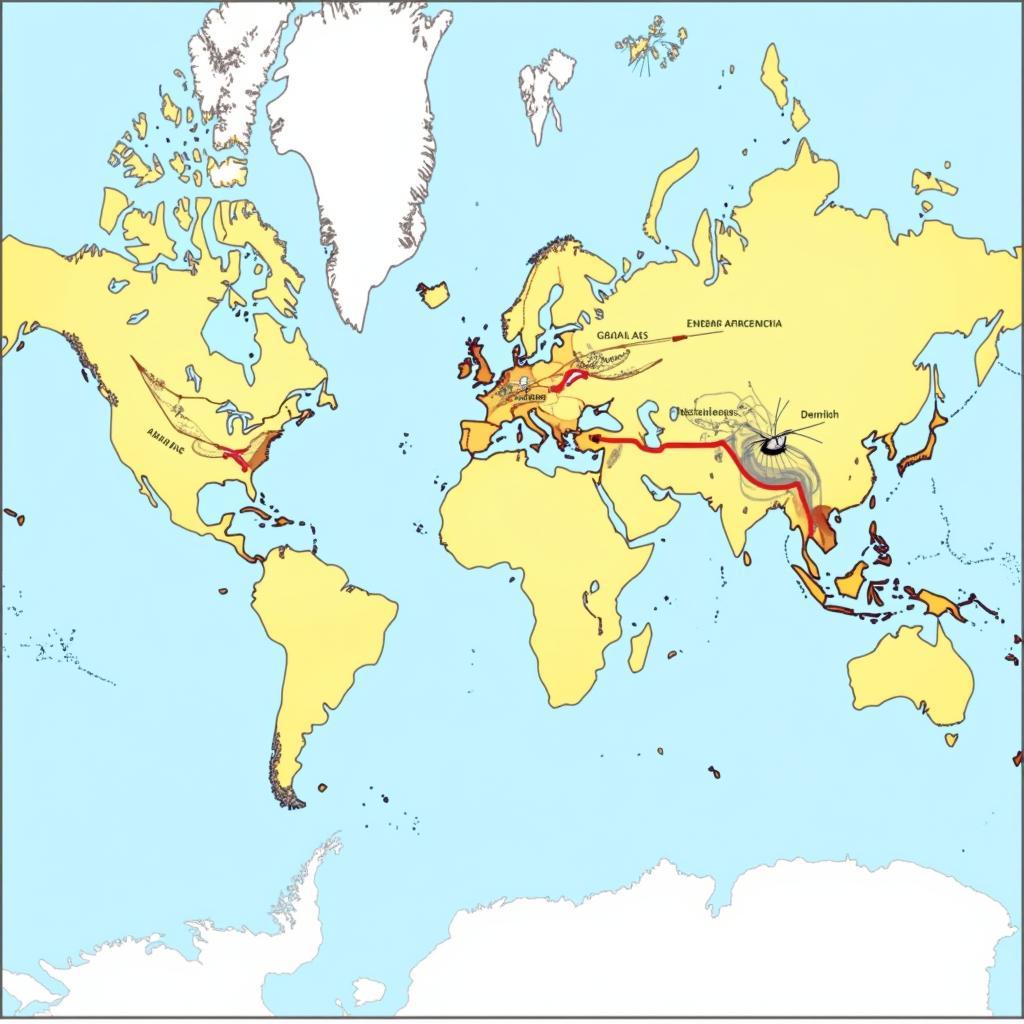Understanding the African Eurasian Migratory Waterbird Agreement (AEWA) for UPSC
The African Eurasian Migratory Waterbird Agreement (AEWA) is a crucial international treaty dedicated to the conservation of migratory waterbirds across Africa, Europe, the Middle East, Central Asia, Greenland, and the Canadian Archipelago. This agreement plays a vital role in protecting these species and their habitats, ensuring their survival for future generations. Understanding AEWA is essential for anyone interested in international environmental law and conservation efforts, especially those preparing for the UPSC exam.
What is the African Eurasian Migratory Waterbird Agreement (AEWA)?
AEWA, developed under the framework of the Convention on the Conservation of Migratory Species of Wild Animals (CMS), provides a legally binding framework for international cooperation to conserve migratory waterbirds and their habitats. It focuses on 255 species of birds ecologically dependent on wetlands for at least part of their annual cycle. The agreement covers a vast geographical area, encompassing the migratory routes, breeding grounds, and wintering sites of these birds. These species face numerous threats, including habitat loss, pollution, and climate change, making international collaboration through AEWA indispensable.
Key Objectives and Provisions of AEWA
AEWA aims to coordinate international efforts for the conservation and management of migratory waterbirds. Some of its key objectives include:
- Habitat Conservation: Protecting and restoring crucial wetland habitats along migratory flyways.
- Species Management: Implementing measures to regulate hunting and other human activities that impact waterbird populations.
- Monitoring and Research: Conducting regular surveys and research to understand population trends and the effectiveness of conservation efforts.
- International Cooperation: Fostering collaboration between countries within the agreement area to address shared conservation challenges.
- Capacity Building: Providing technical and financial support to developing countries to implement AEWA’s provisions.
AEWA utilizes an Action Plan to guide its implementation, setting out specific conservation measures for priority species and habitats. The agreement also encourages the development of Single Species Action Plans for particularly vulnerable species, tailoring conservation efforts to their specific needs.
 AEWA Range Map
AEWA Range Map
AEWA and the UPSC Examination: Why is it Important?
For UPSC aspirants, understanding AEWA is important for several reasons:
- International Relations: AEWA demonstrates international cooperation in environmental conservation, a key theme in international relations.
- Environmental Law and Policy: The agreement exemplifies the application of international law to address environmental challenges.
- Sustainable Development: AEWA contributes to the achievement of sustainable development goals related to biodiversity conservation.
- Current Affairs: Issues related to migratory bird conservation and international environmental agreements frequently appear in current affairs.
Preparing for questions on AEWA requires a thorough understanding of its objectives, key provisions, and the species it covers. It is also important to be aware of current challenges and successes in the implementation of the agreement.
How Does AEWA Work in Practice?
AEWA operates through regular meetings of its Parties, which review the agreement’s implementation and make decisions on future actions. The agreement also relies on a technical body, the Technical Committee, to provide scientific advice and support. One crucial aspect of AEWA’s work is the development and implementation of international action and management plans for specific species or groups of waterbirds. These plans outline concrete actions needed to address threats and ensure their long-term survival.
“Effective conservation of migratory waterbirds requires collaborative efforts across national borders,” says Dr. Anya Sharma, a leading ornithologist specializing in migratory bird conservation. “AEWA provides the essential framework for this collaboration, facilitating the exchange of information, resources, and expertise.”
Challenges and Future of AEWA
Despite its significant contributions, AEWA faces several challenges:
- Enforcement: Ensuring compliance with the agreement’s provisions can be difficult, especially in countries with limited resources.
- Climate Change: The changing climate poses a significant threat to migratory waterbirds, altering habitats and disrupting migration patterns.
- Funding: Securing adequate funding for conservation efforts remains a constant challenge.
The future of AEWA depends on continued international cooperation, effective implementation of its provisions, and adaptation to emerging challenges like climate change. Strengthening partnerships with other organizations and engaging local communities in conservation efforts are also crucial for the long-term success of the agreement.
Conclusion
The African Eurasian Migratory Waterbird Agreement (AEWA) plays a crucial role in the conservation of migratory waterbirds. Understanding its objectives, mechanisms, and challenges is essential for UPSC aspirants. By fostering international cooperation and implementing effective conservation measures, AEWA strives to ensure that these remarkable birds continue to grace our skies for generations to come.
FAQ
- What does AEWA stand for? African Eurasian Migratory Waterbird Agreement.
- Which convention is AEWA under? The Convention on the Conservation of Migratory Species of Wild Animals (CMS).
- How many species does AEWA cover? 255 species of waterbirds.
- What is the main aim of AEWA? To conserve migratory waterbirds and their habitats.
- What are some of the threats to migratory waterbirds? Habitat loss, pollution, and climate change.
- How does AEWA contribute to sustainable development? By conserving biodiversity.
- Why is AEWA important for UPSC? It covers international relations, environmental law, and current affairs.
“The success of AEWA hinges on the commitment of its member states to prioritize conservation and work together towards a shared goal,” adds Dr. Sharma. “The future of these migratory birds depends on our collective action.” Professor David Otieno, a Kenyan expert in environmental law, further emphasizes the importance of AEWA by stating, “This agreement sets a precedent for international environmental cooperation, demonstrating the power of collective action to address shared ecological challenges.”
Looking for more information on international environmental agreements? Explore our articles on the Convention on Biological Diversity (CBD) and the Ramsar Convention on Wetlands.
Need assistance? Contact us 24/7: Phone: +255768904061, Email: kaka.mag@gmail.com, or visit our office at Mbarali DC Mawindi, Kangaga, Tanzania. Our customer service team is ready to help.

